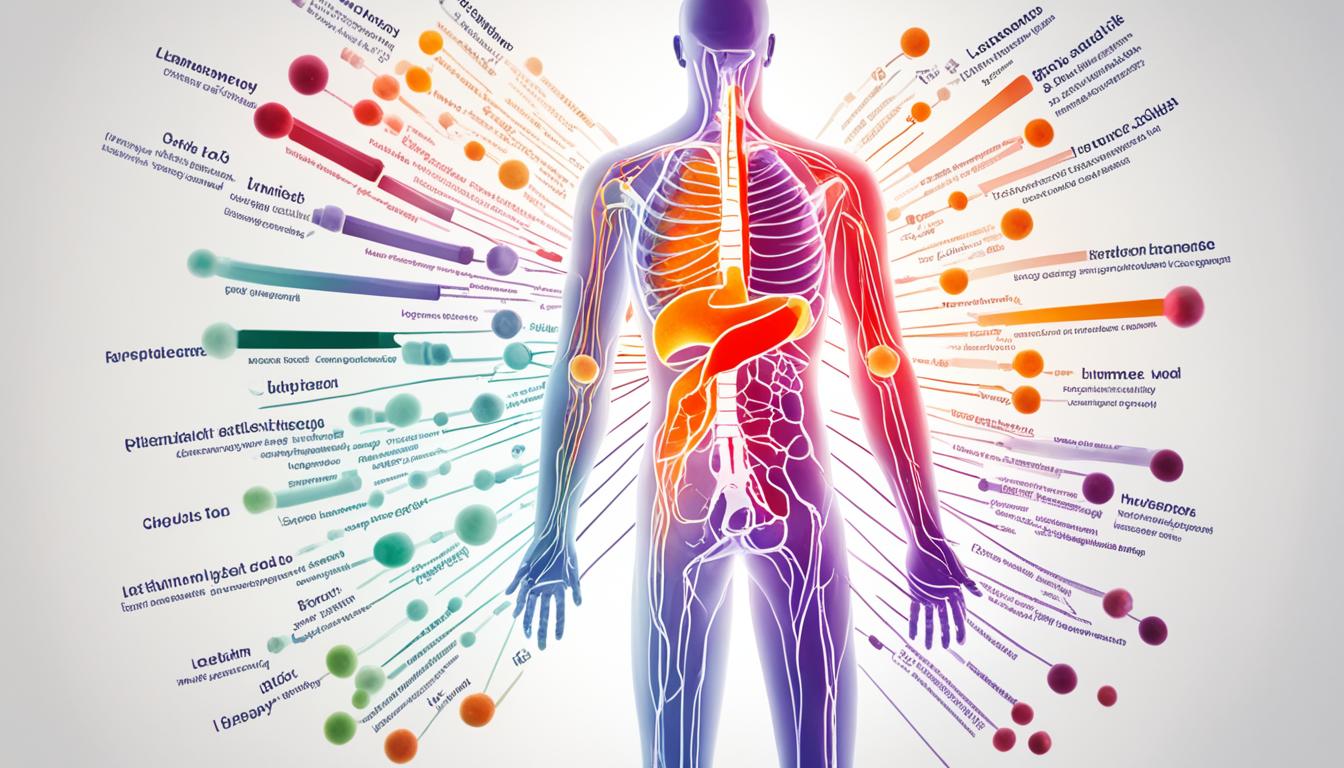Acute lymphocytic leukemia (ALL) is a kind of blood cancer. It mostly affects kids but can also strike adults. About 60% of cases happen in children, especially those under 5. However, ALL is more dangerous for grown-ups.
The disease starts when the body makes too many young white blood cells. These cells, called lymphoblasts or lymphocytes, turn into leukemia cells. These leukemia cells grow in the bone marrow and blood. They take up space meant for normal cells. This leads to symptoms like purpura and petechiae, a swollen belly, and problems in the brain and spinal cord if the cells get there.
ALL risk factors include age and certain genetic conditions. Also, it might be due to exposure to radiation or chemicals, along with some viruses. Doctors diagnose ALL through medical history, an exam, and tests like biopsies and imaging. They look at genetic information too.
Treatments for ALL are chemotherapy, radiation, and sometimes a stem cell transplant. Targeted therapy and immunotherapy are also options. Children often start with chemotherapy. The chance of surviving ALL for 5 years is about 70.8%. This number changes based on the person’s age, health, and specific type of ALL.
Key Takeaways:
- ALL is a blood cancer mainly found in children.
- Its symptoms include purpura and petechiae and a swollen belly.
- Factors like age and some viruses can increase the risk of ALL.
- To diagnose ALL, doctors use the patient’s history and perform tests.
- Treatments involve chemotherapy, radiation, and possibly a stem cell transplant.
Treatment Options for Acute Lymphocytic Leukemia
There are several ways to treat acute lymphocytic leukemia (ALL). The main aim is to get rid of or control the cancer cells. This is done while keeping healthy cells safe. The treatments used for ALL are:
- Chemotherapy: It uses powerful drugs to kill the cancer cells. This treatment is often the first choice. The drugs are given by mouth, injected, or through IV.
- Radiation therapy: Beams with high energy are used to kill the cancer cells. It’s best if leukemia has reached the central nervous system.
- Bone marrow or stem cell transplant: This helps by putting in new, healthy bone marrow. It’s sometimes done with chemotherapy to encourage healthy cell growth.
- Targeted therapy: It stops certain proteins or genes in the cancer cells from growing. This way, it doesn’t hurt as many healthy cells.
- Immunotherapy: It makes the body’s defense system fight against the leukemia cells. The goal is to make the immune system better at seeing and destroying these cells.
The way ALL is treated depends on the type of ALL and the person’s health and age. The medical team looks at these to make a treatment plan. This plan aims for the best chance of getting well and staying well.
Innovative Approaches in Leukemia Treatment
New ideas are making leukemia treatments better. Scientists are always looking for different treatments. Some of the new treatments being looked at include:
- Chimeric Antigen Receptor (CAR) T-cell therapy
- Biologic therapy
- Genetic testing and precision medicine
- Novel drug combinations
These changes give hope for better results and more ways to treat ALL.
| Treatment Option | Pros | Cons |
|---|---|---|
| Chemotherapy |
|
|
| Radiation therapy |
|
|
| Bone marrow or stem cell transplant |
|
|
| Targeted therapy |
|
|
| Immunotherapy |
|
|
Prognosis and Outlook for Acute Lymphocytic Leukemia
The outlook for acute lymphocytic leukemia (ALL) is much better now, with a 70.8% survival rate from 2012 to 2018. Things like age, health, and type of ALL affect a person’s chance of recovery. Thanks to new research, we have better ways to diagnose and treat ALL, which improves the survival rate.
While ALL can be dangerous, especially in adults, it’s very treatable in kids. The main goal is to reach remission, where there is no sign of cancer. Sometimes, the cancer might not fully disappear, leading to a version that needs constant check-ups and maybe more treatment.
There is help for those dealing with ALL and their families. Support groups and resources exist to offer information, advice, and emotional support. They aim to make the ALL journey easier, helping people cope better and improving their well-being.

